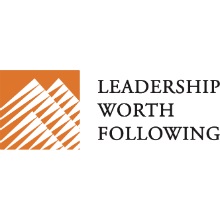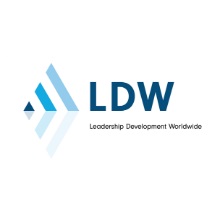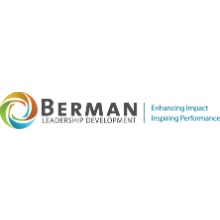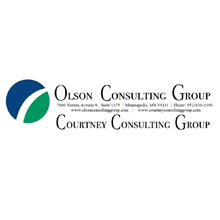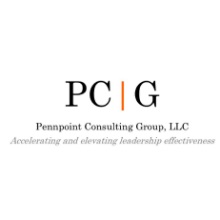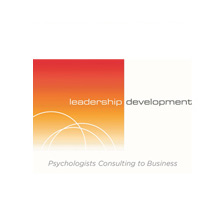- Home
- About
- Advocacy
- Community
- Education
- OnDemand Training
- Upcoming Webinars
- Past Webinars
- Leadership Development Initiative
- What's Next in Consulting Training and Education
- SCP Training & Education Guidelines
- APA Continuing Education
- SCP Podcast
- Research
- Diversity
- Conferences
- 2022 SCP Annual Conference
- Past SCP Conferences
- Blog
- Contact Us
Advancing Meaningful DEI Outcomes within SCPBy: Ryan C. Warner, PhD, CRC Recent events, grounded in historical context, have served as a catalyst for organizations to take notice and directly address the problem of inequities within our workplaces. As psychologists, it has been the status quo to acknowledge that diversity, equity, and inclusion (DEI) are important and should be ingrained in every aspect of our work. Serving as DEI champions should be intentional and deliberate throughout our consulting practices. And within this context, questions may surface that trigger spirited discussion. For example, what actions do we intentionally and deliberately engage in on an ongoing basis to enhance DEI when working with individuals, teams, and organizations? What exactly are diversity, equity, and inclusion anyway? And, as psychologists, how do we lead change that inspires and invigorates others? You may have heard the saying: "Diversity is being invited to the party, inclusion is being asked to dance, and equity is being a part of the party planning." Diversity is specifically defined as the presence of difference (e.g., gender, racial/ethnic, religion, age, difference of thought, etc.) within a given setting or organization. Inclusion is about individuals of different identities feeling and/or being valued, leveraged, and welcomed. Equity is an approach that ensures everyone has access to the same opportunities through a fair, inclusive process. When examining Division 13, how can SCP members work together to ensure that diverse perspectives are encouraged, considered, and weighed in the decisions that shape our organization and its future? What are the actions we need to take to achieve equity and foster meaningful inclusion - the kind that facilitates progress so that DEI is celebrated and appreciated by all? These are important questions that should be viewed as more than abstract discussions spurred by events of the day. Therefore, as a newly established domain within SCP, the Diversity, Equity, and Inclusion (DEI) Domain is committed to working together with all members to create a culture in which DEI is not just appreciated but embedded in all that we do. As a kickoff for this newly formed Domain, SCP invited all members to attend a Town Hall in August 2021. This event aimed to engage participants in respectful, educational, and open dialogue around diversity, equity, and inclusion within the Division. Led by me (Dr. Ryan C. Warner; Diversity, Equity, and Inclusion Domain Lead) and Dr. Larry Norton (President, Society of Consulting Psychology), about 30 members discussed how enabling DEI can benefit SCP and identified actions to further enrich DEI within the Division. Enabling DEI to Benefit SCP When DEI is celebrated as part of an organization's culture, the effects can be profound. For instance, several studies have noted an increase in engagement, satisfaction, and productivity. Additionally, member recruitment becomes easier as well. As a collective body of educated, informed, and enlightened professionals, hopefully we feel a sense of obligation to promote equity and justice, given the work we do with diverse individuals, teams, and organizations. Furthermore, even if we believe we are already fully competent in providing culturally adaptive services, we still have an ethical responsibility to further enhance our DEI practices to best meet the needs of the evolving and diverse workforce. Based on SCP member feedback, enabling and integrating DEI can benefit the Division in various ways. 1. Improve Member Engagement One benefit of promoting DEI is to improve engagement from members. Inclusion at SCP means that all members—across various dimensions of diversity—feel valued, respected, treated fairly, and supported in ways that invite engagement and a sense of personal satisfaction. When the diversity of strengths and unique backgrounds is acknowledged, this ultimately leads to a stronger and more vibrant organization. What does this look like “on the ground”? Based on member feedback, inclusion will lead to more meaningful engagement with conferences and events and will assist with preparing future generations of psychologists and consultants. When inclusion gaps are identified and explored, there is more diversity of thought, which leads to more innovative ideas to help shape our future in a changing world. If we fail at this, we are not genuinely representing and growing the breadth of consulting psychology and its current and future practitioners and clients. 2. Boost Consulting Services As a Society that is committed to applying psychological insights for the success and fulfillment of different individuals, groups, and organizations, it is essential that DEI be at the forefront of our work. We all do not have to be DEI experts; however, it is essential that each and all of us take a deliberate approach to best meet the needs of a growing and diverse workforce and of increasingly multicultural organizations and societies. According to an SCP member: “Ingraining DEI within everything we do is not only the right thing to do, but it is required to exist in this day and age. If we don't incorporate and infuse DEI, we are not truly representing and advocating for consulting psychology.” Specifically, enabling DEI can benefit SCP by providing tools and resources to members about implicit bias, culturally adaptive consulting services, and self-assessment to better serve our clients. 3. Grow the Future of Division 13 For SCP to grow and evolve, it is essential that all members have equitable opportunities to contribute to and influence future strategic direction. According to one SCP member: "The formalizing of DEI as a domain makes it [diversity] more sustainable, more of a formal component of the organization." Another member went on to say, "The society would be more relevant in the world -- and better prepared to truly encompass consulting psychology in a deeper way." Furthermore, as a domain, DEI now has voting rights on the executive board, which can influence policies and procedures to shape the growth and future of the Division. Actions to Further Enrich DEI within SCP When making DEI sustainable for the future, identifying specific and attainable actions can assist with creating a culture of inclusion within the Society. Prior to becoming a Domain, the DEI Committee began laying the foundation to boost meaningful change. Previous initiatives to promote diversity, equity, and inclusions included continuing education webinars, the Self-As-Instruments learning series, diversity formation groups, and blog posts, to name a few. To further build upon this work, feedback about ideas and actions that individual members and SCP governance can take to boost DEI was gathered. It is important to note that this is not a comprehensive list of all recommendations; additional input from past and future SCP membership surveys will help guide future DEI strategic direction. Individual Member Actions to Boost DEI
SCP Governance Actions to Boost DEI
Next Steps We know that implementing and sustaining DEI is an ongoing effort. The DEI Domain is dedicated to identifying and exploring DEI areas of growth to continue propelling SCP forward for the future. Through quarterly webinar training, examining systemic policies/practices, DEI resources dissemination, membership survey data collection, conference events, and ongoing dialogue, the DEI Domain is eager to take a multifaced approach to advance SCP's mission of promoting meaningful change and inclusion throughout the field of consulting psychology. Through these initiatives and in alignment with the SCP mission, we hope that all members continue to engage in DEI awareness and growth. For true change to be accomplished, respective exchange between members is not only essential, but necessary. As members of SCP, we encourage you to reflect and take initiative on the individual actions outlined above. We also urge you to identify what gaps you see within your current consulting work that would benefit from more intentional DEI practices. Altogether, we look forward to you engaging with us and being part of our continued journey! To receive the full SCP Town Hall discussion notes summary, learn how to become involved in the DEI Domain, or for any additional comments/questions, please email DEI Domain Lead (Dr. Ryan C. Warner) at: [email protected]. Resources Comprehensive DEI Guide to Improve DEI within the Workplace DEI SCP Webpage and Additional Resources Diversity is Being Invited to the Party: Inclusion is Being Asked to Dance YouTube Video SCP Inclusion at Work Blog Post Consulting White: Self-Exploration and GrowthBy Laurie B. Moret Dr. John Fulkerson grew up in the deep south. His early life experiences in a racially segregated community introduced him to a biased society before he had language for it. While not everyone in his family bought into this way of thinking, some did and he was aware of discrimination. He noticed that he had limited contact with people with skin colors different from his own, and he noticed racist movies, language and stories in his surroundings. His deeper self-exploration started in college when he took a course on Differential Psychology, and in recent years, his interest in understanding those parts of his past has grown and deepened to inform how he approaches work and life. While there was no single, critical event, Dr. Fulkerson has been nurturing a building realization of racism’s impact on his own life and those around him. He has embarked on an ongoing journey that is both reflective and simple with the willingness to address racism in everyday small moments, consistently. For example, attending to how he feels and reacts when in an elevator or other close space with a Black person, commenting when in the presence of an individual who shares a racist story, questioning family and friends about their beliefs and experiences, and being open to talk about race. As such, he lives his life attending to the many micro-opportunities for engagement and connection. This takes courage. Over the years, he has broached difficult discussions with his mother and close family friends who are White. When with his long-time friends, he confronts them when they bring up topics of race in a derogatory manner. He routinely seeks to draw them out and influence change, which is a delicate balance. He’s learned how important it is to confront the situation but doing so in a way that keeps others engaged so change is possible. These early conversations started his journey to try and understand his past and then figure out what he can realistically do to influence positive change. He supports his journey by reading books and articles, listening to others, and asking questions. For him, recognizing how critical dialogue is when large scale social change is needed has inspired him to focus on a few key elements essential for constructive conversations. He seeks to understand his own comfort level and boundaries as well as what he stands for and is willing to stand up for. Thinking in advance about how he will respond when he is exposed to things counter to his beliefs and values is also important. As psychologists, we impact individuals in meaningful ways. Dr. Fulkerson reminds us that we need to have patience and think about how we engage. While there is no quick fix, he encourages us each to ask ourselves what can we do modestly on a daily basis to make a positive impact. He routinely asks himself, “What can I realistically do? How do I put myself in the mode of helping others have insights?” With this preparation, he hopes that he may be able to help others modify their cognitive map. Reminded of his own upbringing, he underscores how broad the spectrum of beliefs is on the topic of race. Sometimes, a critical moment may be simply helping another see that racism is real. Helping others increase their understanding of the experiences of people of color and how that impacts our society as a whole is a significant step because until the reality of racism is understood, it’s harder to be a part of positive change. Psychologists are a in a unique position to help people appreciate other’s experiences and find opportunities to speak up when another is capable of listening. For Dr. Fulkerson, interacting with others and staying attuned to them helps him remain sensitized to the most productive way to engage others in discussion and as such motivate them to stay as curious, open, and involved as he continues to be.
Bio Dr. John Fulkerson has been working in organizations for 50 years. His experiences in a variety of industries working both as an internal and external consultant has afforded him the opportunity to travel to nearly 80 countries. Over that time, he has seen an evolution both domestically and internationally in how diversity and culture have changed in organizations. Today, he works as an independent consultant in the Northeast. When not with clients, he is working on a book to teach self-coaching skills. Dr. Laurie Moret is a practicing leadership and organizational development consultant, coach and facilitator in the Washington, D.C. metro region. Dr. Moret worked for two large consulting firms before starting her own practice in 2008. She consults in a variety of organizations and industries. Most recently, she published a book on consulting in National Security settings and was awarded Fellow Status by the Society of Consulting Psychology A Personal Perspective on Differences An Interview with Dr. Greg PenningtonBy: Catherine Hambley, PhD I asked Dr. Pennington about how he got involved in DE&I work and to share his perspectives on the topic. He began by stating that he believes DE&I is a broadly defined term that is about more than just race and gender. He shared that his particular area of interest is around people of color. This is in part because race has played such a significant role in the history of the United States and because of his personal identify as a Black man. He talked about how Black Americans have been seen as having particular roles and functions, causing them to be viewed as “less than”. There is a history of attitudes around race that has evolved over time, yet there are “layers” of inequity and inequality that Blacks in our country have and continue to experience. He states that “race has been a real barometer” in terms of what our country has done with people of color in the diversity space. Race is the defining marker around how willing organizations are to believe that Blacks are capable and equal to others. It is not enough to say that a corporation has done its fair share of hiring people of color – the defining factor is how those people of color are regarded and treated, and whether they truly have a seat at the table when it comes to decision-making and opportunities. Dr. Pennington believes that a true Litmus test for corporations is how willing they are to accept and appreciate differences – one might add that not only is it about this willingness, but it is also about recognizing that when those differences are valued as strengths to leverage, they become critical assets for organizations. Perhaps, even a company’s competitive advantage. He shared some examples of different people he has worked with and what the work entailed. I was intrigued with one story he offered related one of his consulting clients, a white CEO. That client was reflecting about his experience of how difficult it is to truly relate to what it’s like to be Black. This CEO had an aha moment when his daughter came to him to talk about some challenges she was having because she was experiencing sexual harassment. The client realized that it is not difficult for others to relate to what it might be like to be sexually harassed but very difficult to relate to being a person of color. The point here is this: not only does our country have a long sordid history in terms of how people of color have been treated and about attitudes that non-Blacks hold, it also has failed miserably at appreciating the complexities of experiences that Blacks face on a regular (if not daily) basis. It is difficult to make significant inroads in the DE&I space when so much of corporate America (and society at large) fail to recognize the enormous challenges that occur for people of color and fail to make connections between race and other categories of difference. People who are not of color just do not understand and, some might argue, many are not invested in trying to understand or get curious about this. When I asked Dr. Pennington what has been most helpful in his own professional development in the domain of DE&I, he pointed to two significant work experiences: the first was that he spent a number of years with a consulting firm that was focused on providing diversity and inclusion training and consulting (at both the organizational and individual level). This experience helped him to learn about and appreciate the science of diversity, such that the work done at the consulting firm was all grounded in research. The second influential experience he had was his work within a large organization working in the high potential leadership development space. As VP of Development and Planning at Johnson Controls, one area of focus for him was to ensure that there were sufficient and appropriate opportunities for people of color to enter the talent development pipeline. He also was in a position to make sure that one of the desired leadership competencies was around the area of diversity. His experience taught him that he had to leverage his influence in the area of diversity, take advantage of the existing processes for talent management, and stay alert to how much risk he could take. Our interview then shifted to advice for professionals. I asked Dr. Pennington to reflect upon what he believes is most important for consulting psychologists to consider in the area of DE&I. He acknowledged that this was a challenging question because of two, potentially conflicting factors: as psychologists, we are driven by a need to be of service, and as humans, we all experience some degree of resistance to change. As consultants, we need to be careful about how much we assume that everyone buys in and understands the importance of promoting and leveraging diversity. We might be easily tempted to believe that our good work has had a meaningful and lasting impact, when in fact, what we think of as “good” work may indeed have little and/or lasting impact. We must stay alert for our own confirmation bias! When it comes to addressing issues of systemic racism, Dr. Pennington cautions psychologists to “stay in their lane”, or put another way, be careful about offering work in areas that one is not adequately equipped to address. He highlights the importance of drawing upon evidence-based practice (much like clinical psychologists) while also recognizing that “everything we are doing in this space is a case study”. This says to me that the more we can share our experiences with our fellow consulting psychologists, the more we can learn from one another and the more we can begin to develop best practices that are founded in research. Here is an opportunity for peer sharing and learning. Dr. Pennington acknowledges his own limitations – while he does have expertise of working with individuals and organizations in the DE&I space, he does not feel he has the expertise, socio-political and legal for instance, to address racism at the societal level. An interesting topic arose during our discussion that had to do with Dr. Pennington’s more recent discoveries managing “diversity within diversity”. His experiences tell him that more diversity exists within groups than between groups, yet people who are not of color would probably think the reverse is true. He talked about how people of color often have to spend time “looking in the mirror” (self-reflecting). I asked about this, and Dr. Pennington explained that when someone is the only or one of the onlypersons of color (versus when the organization has a longer history of a diverse workforce), s/he is likely to be dealing with more stereotypes, more intolerance of mistakes, and/or having to be very intentional about getting feedback from her/his boss. He discussed the dynamics of being the first Black person to take on this or that role versus the dynamics of being the 2nd one, which adds a whole new layer of complexity. Dr. Pennington has found that ¾’s of the diversity clients he works with have developed “learning circles” comprised of Black peers in leadership roles, such that they are gleaning wisdom from one another about how best to navigate in a world where their differences are highlighted and often, not adequately leveraged. The learning circles have been very helpful to many of his clients. This is one example of how work in this space is continually evolving! I concluded my interview with Dr. Pennington by asking him what he believes is most important for the public to know about DE&I within their organization. One point he made is that we need to help leaders recognize that while DE&I work is often done at the leadership level, it frequently has difficulty being effectively cascaded down throughout the entire organization. We all know that leadership and change start at the top, and we must recognize that it is critical for it to permeate down through the ranks. For example, maybe the CEO “gets it” but how effective is s/he at making sure that the next level down “gets it” and then how effective is that level at making sure those at the next level get it. Are there mechanisms in place that foster this type of cascading effect? Are leaders and managers held accountable for ensuring clarity and alignment in their areas of influence? It is also important for leaders to create a safe place for people to push back on senior executives, especially as it related to diversity, equity and inclusion. And finally, it is important to find a space to have executives discover and explore their own beliefs, behaviors and values around diversity – and then be intentional about fostering a culture that values diversity. Even if most senior leaders eventually get it, some really do need support in how to be seen as credible and capable of effectively sponsoring and demonstrating effective applications of diversity, equity and inclusion. When I asked Dr. Pennington if there was anything else he wanted to comment on or add to our discussion regarding diversity, inclusion and equity, his response said it all: “So much!” I just wish we had more time because he is a fountain of wisdom, experience and thoughtfulness.
By: Marnie Swerdlin Crawford, Ph.D. Perspectives on Diversity, Equity and Inclusion with Dr. Gloria PereiraAs a Hispanic female who came to the United States from Puerto Rico, Dr. Pereira has her own journey relative to diversity, equity, and inclusion. When asked about her experience, Dr. Pereira said language was the barrier. She came to the US to pursue her Ph.D. after completing her masters in psychology in Puerto Rico. She had to do another masters degree here as her first one did not count, which she reported as typical. “When I came here the main thing I felt is I did not speak the (English) language or write the language as well since it was my second language.” It was harder in graduate school as writing took longer. She would get feedback that her written language was not up to that of her peers and felt discriminated against by that more than where she came from or the color of her skin. She had lighter skin and could pass for white, so she did not necessarily feel like a person of color coming to the US. In Puerto Rico, the lighter the skin, the more positive you are seen she shared. Speaking the language correctly was the issue in her mind. Even when her Puerto Rican friends in the US would say certain instances were discrimination, she did not attribute them to that. Her thinking was, “That doesn’t happen to me.” After beginning her career, however, she wondered when, late in her second pregnancy, she was laid off from her consulting job during an economic downturn. She received maternity leave and a package, but she had been the only licensed PhD-level psychologist and only Hispanic in her local office. Now, as she reads resources like White Fragility, she wonders, “Where do I fit in?” “I could be discriminating,” she offers and comments she is not sure where she fits. In her work with multinational companies, she has helped clients understand what happens here in the US, how they can work with their US counterparts, and the perceptions US counterparts may have of them given stereotypes of people of different colors. They might not have faced this in their own countries but are perceived differently in the US. She recalled a female client in Mexico mentioning a male counterpart in the US who referenced that she had a child, asked why she was working, and expressed that she shouldn’t be working. The last couple of years Dr. Pereira has been coaching a number of executives in Latin America, who live in their native countries but work for a Canadian organization. Issues of diversity have come up in helping them understand the Canadian culture and their bosses, who reside in Canada and are either Canadian or American. For executive coaches who are not people of color and are working one-on-one with a client who is a person of color, Dr. Pereira says it’s important to “understand those people’s experiences are real. Sometimes a coach thinks it’s not reality and it’s something about that person or some behavior they’re not doing. Be more open to other explanations. Don’t always attribute it to the person.” She suggests thinking about “how to help that person in that environment, since we don’t have control over the company culture.” 2020 has resulted in some sudden changes. Working from home via video conference during the pandemic has brought coworkers into each others’ homes virtually. As a consequence, people may have unintentionally revealed parts of themselves they might not have otherwise. What do we need to be sensitive to with regard to this? Dr. Pereira says there is the question of whether to mention or ignore the piece of information. Additionally, she thinks the person may wonder how to counteract what they didn’t want known or counteract how it will be perceived. Many working parents have had the added responsibility of supervising their children, including their online schooling, while working from home during the pandemic. Dr. Pereira thinks that attitudes toward working parents may be more forgiving now than they have been in the past. On the other hand, she also notes the impact on women as they are more often the caretakers in their families. Related to that point, recent reports confirm that women are leaving the workforce in larger numbers than men during the pandemic and its associated challenges for working parents. Dr. Pereira hopes it doesn’t mean we are going back to traditional roles. “If women are leaving the workforce, then they are not there to voice their concerns in the workplace. The guys left will say here’s how we’re going to do things. Then, the women will have to adapt to that.” Another concern is “if employers are pressuring people to come back, and the women are not there, and the men are.” With the promise of a vaccine, hopefully these potential disparities will not be permanent, but it’s something to think about intentionally. Dr. Gloria Pereira – Executive Coach Dr. Marnie Swerdlin Crawford
By: Greg Pennington, PhD A Response to: Onward: A Discussion on Diversity, Equity, & Inclusion
"In coaching clients we are often helping them become more influential and powerful in their organizations. How are the pathways to power different for people of color or anyone under-represented vs. white clients who aspire to more power?" Many of our consulting psychology clients are pursuing ways to increase their influence and effectiveness in their organizations. This involves the use of power. Let's assume there are some high probability pathways to power and then let's consider what if any difference it makes if the person in pursuit of power is a member of an under-represented group or an over-represented one. There is research to support both the pathways outlined and the differences in experience between under-represented groups, for example, blacks and women, and over-represented groups, for instance, white men. Presumption of Capability Let's start before the race begins. There is research to support that applicants with "black sounding" names are far less likely to be interviewed even when the resumes are otherwise exactly the same. If this happens in print, what is likely to be the first reaction when the person of color shows up? Even if it is hard to believe that interviewers and hiring managers are intentionally discriminating based on race, the Black candidate is likely to start off a few steps behind compared to a white counter-part because their race is less likely to be considered a potential block to their capability. Performance Of course one critical ingredient to becoming more influential and powerful in an organization is consistently delivering results. This is where measurable outcomes are usually touted as a way to level the playing field. Black employees are as invested in being judged on the basis of merit as any group of people. It is not uncommon that someone in the family has encouraged or admonished them to just focus on getting the work done. It is also likely, confirmed in a recent Korn Ferry survey, that Black executives accept there is an additional tax on their performance. It comes in various forms: being expected to do more, often being assigned to the most difficult situations, and being more likely to wear "interim" titles because that have not yet demonstrated a capability when other groups are more likely to be assigned permanent titles because they have demonstrated the potential to do a job. When the race begins, under-represented groups may be more likely to have a few extra yards to run in their lane. While sustainable performance is a key to all developing leaders and driving results through others is an important element of that, how assignments are made (e.g. sales territories), how performance is judged (e.g. was it the leader's behavior or were they given an all-star team or an under-performing one), and how failures are interpreted (e.g. I am sure they can improve versus I knew they could not do this!), all open up opportunities for biases including explicit racial bias and more nuanced confirmation bias. Image Leadership in organizations will always represent a club of sorts. Ideally there will be varying degrees of inclusiveness and expanding bands of tolerance for differences but for now there continues to be questions of "who looks like and acts like us" and "who can represent us". Aspiring leaders are often told to "look the part before you get the part". While this might include the recent MBA graduate dressing like the C-Suite executives they aspire to join, what do you do if there is no one who looks like you? If there is evidence that someone who is as thoughtful as you can operate with influence and impact in the organization, it serves as a driver for your behavior that increases the probability of reaching your goal. If you are Black and do not see a Black person in senior roles, how do you interpret your odds when there is little evidence of achieving that goal? The same dynamics work from the perspective of those already in the club. How much risk is the club willing to take, how much power and influence is it willing to share with a type of person, a style of leadership that has not already been integrated into how the club functions? What risk does the outsider want to take? How much of one's self-image will have to be contained or compromised to fit in? If you already look like you belong in the race, you don't get distracted by "how do I look?" The probability of being caught in a dilemma of identifying with the corporation or maintaining important elements of your authentic self increases the chances of the leader hesitating when they could be in full stride. Exposure It takes extra effort to gain influence and power if you are not known by, and connected to others already in positions of leadership and influence. This also includes the added benefit of high profile assignments. Bosses, mentors, sponsors, advocates, executive coaches and key stakeholders all contribute to getting emerging leaders and high potentials the visibility they need to have positive name recognition, brand reputation, and endorsements. While the quality of feedback from manager to direct report is less effective than desired in general, it can be even more problematic when delivered to Black leaders. Though mentors and sponsors can be effective even if not the same race as the leader being mentored or sponsored, Black employees feel limited in what support they can get from mentors in particular because of the caution they have in the mentor not fully understanding what it is like to navigate in an organization where they are one of the few. Black employees may lose additional momentum without access to credible influencers who take the risk to challenge them with direct feedback and the risk to advocate for them when others are raising questions about their potential. Having someone show you the best lanes to run and having someone prepare the way for you is an advantage. Influence and power are essential elements of effective leadership. From personal experience, best practice and rigorous research, we can map some common ingredients to developing influence and power. While the pathways can look familiar for a wide diversity of individuals, the probability of getting close to one's potential with a minimum of headwinds varies. It is a privilege to be able run a race, pursue a path, without being distracted internally and blocked externally by reactions to a dimension of your identity - race as an example - that you can not change and would not elect to change. It is not uncommon for successful senior leaders who are Black to affirm that they knew the path to success required an additional tax, and they wondered how much further and faster they could have gone, if they had not had to fight so hard along the way.
By: Daniel L. Stover, M.A. Shoulder to Shoulder: A Deeper Understanding of Diversity, Equity, and Inclusion with Dr. Karen Y. Wilson-StarksWhen it comes to race, allyship and activism, many of us ask ourselves and our consulting psychologist colleagues, “what should we do?” Our hearts and intentions are squarely in the right place when we ask this question. Yet, there is so much more to social change than simply acting. Our actions and choices in consulting psychology can and will make a difference; however, we must not be so quick to act without deeper understanding. Just as we would advise our clients: we mustn't act hastily, nor should we stay idle just to collect more information. Progress through activism depends on understanding, so what exactly should we better understand? When this question was posed to Dr. Karen Y. Wilson-Starks, a rich discussion emerged about the diversity of experiences in the United States. Imagine an esteemed friend and colleague whom you admire, respect, and deeply trust being followed by grocery store employees, suspected of theft. Place yourself in the passenger seat of your friend’s car, while pulled over by police, and watch verbal commands be barked at them. Picture your colleague being told they are in the “wrong line” boarding a plane because it’s first class priority. Imagine your friend on their afternoon jog, tackled by police for suspecting them as a criminal in the high end neighborhood where they live. These and many similar situations are happening to our colleagues each day because of the color of their skin. Although anger is an appropriate emotion to injustice, Dr. Wilson-Starks is clear on how it should be harnessed. Following the non-violent activism of Reverend Dr. Martin Luther King Jr. and Congressman John Lewis, she said, “progress is more about building than tearing down. Non-violent activism targets detrimental laws and practices and uses peaceful demonstration to bring attention and change to real issues. Violence, destruction of property, and assaults on people cause further polarization and remove focus from the important issues. Perpetrators of systems of oppression are rarely willing to look in the mirror when the same disenfranchising tactics are used against them. Non-violent social change is an entire system of response that requires rigorous training and learning to consistently take the high road even when mistreated. For long-term sustainable change, you tear down the systems of oppression without tearing down people. For example, you may find a policy in an organization that negatively impacts or discriminates against a person of color, or any minority group. You can tear down the policy and build a new one without tearing down the human resources manager.” Understanding that systems can be destroyed without destroying people, offers much hope about how progress is achieved. Dr. Wilson-Starks included an important reflection on history: “Although the tearing down of a confederate statue may be a symbolic win, we also need to understand that history, even when it is very unpleasant, needs to be preserved if we are to learn and make change. A fuller picture of history allows us to change today’s system.” She adds: “If we are to make progress through understanding, we must recognize that everybody is missing part of the story. When we truly listen to each other and embrace diversity of thought, we get a little closer to having a fuller understanding of what’s happening around us. In organizations, we know that homogeneity of thought is counterproductive to peak results. The same is true of social progress. Disparate groups must see each other's strengths, then create community together.” Dr. Wilson-Starks made a few recommendations for consulting psychologists who’d like to better understand the past and said “it’s crucially important to know and learn from history and create progress from those lessons. Without knowing what happened both before and after the Emancipation Proclamation, it’s difficult to grasp the full impact of systemic racism.” Many mistakenly believe that slavery was in the distant past; however, her father grew up on the slave plantation where her great-grandparents were enslaved. She recommends focusing on the Reconstruction Era and the promising early successes of inclusion and wealth-building in the black community. Progress was halted and gains eroded when nefarious systemic racism in the form of Jim Crow laws and other systems of oppression, segregation, and anti-blackness increased and persisted. She encourages us to study those in the civil rights movement, with emphasis on the non-violent approach led by Dr. Martin Luther King Jr., and to familiarize ourselves with continuing injustices in the systems of incarceration, voting, and housing. “The goal of this understanding is to recognize where America is not living up to its values, so that we can change.” When we better understand diverse experiences and have a stronger grasp on the nuances of our history, then what do we do as business consultants? Dr. Wilson-Starks made a motivating call to action: “Companies are in a great position to make a stand, be a role model for the country, and take us further and faster.” She shared five essentials for creating change in business:
“When business leaders are not willing to listen, show them the data. They are likely unaware of the unintended consequences that mishandling diversity, inclusion, and multiculturalism has on their company. Missed opportunities lessen market share and profitability. We can bring people into a room, without bashing, and show them that doing the right thing is profitable and that multiculturalism serves the greater good. To achieve this, we need to stand shoulder to shoulder in our earnest effort to see the same events from different lenses. It’s only when we are side by side that we truly see what the other sees and then collectively decide what to do about it.” Dr. Wilson-Starks concludes. ABOUTDr. Karen Y. Wilson-Starks - Consulting Psychologist Dr. Karen Y. Wilson-Starks is the President and CEO of TRANSLEADERSHIP, INC., host of The Voice of Leadership podcast, and author of Lead Yourself First: The Senior Leader’s Guide to Engaging Your People for Greater Performance and Impact. Her Ph.D. degree in clinical psychology is from the University of Connecticut in Storrs. Her previous positions include Senior Faculty member for the Center for Creative Leadership (CCL) and active duty Army officer and psychologist. She consults with executive business leaders to select and retain their best people, create high performance teams, and develop cultures that get rapid innovative results. Dan Stover-Interviewer and Author
Daniel Stover is the Founder of Ensight Partners, a leadership development firm specializing in emotional intelligence. Dan received his undergraduate degrees from The Ohio State University and his Master's in I/O psychology from The Chicago School of Professional Psychology. He is the recipient of the Excellency Award for leadership development from Geneva Group International. Dan lives and works in Southern California, and his personal passions outside of consulting psychology are mountain climbing and photography. More about Dan and his organization can be found here.
By: Ryan C. Warner, Ph.D. Strategies for Facilitating Conversations on RaceThroughout my experiences, I have seen first hand how difficult it is to facilitate conversations about race and racism. As a Black male, I personally find it challenging to express my racial experiences and perspectives to others who may not share similar backgrounds. Facilitating these conversations may often involve tension, conflict, and fear which contributes to discomfort. This may mitigate the probability of continuing dialogue. No matter what setting these conversations take place, both the facilitator and participants may bring emotional experiences along with their deeply held values and beliefs into the room. Throughout my previous experiences, I have collected valuable resources and takeaways that have prepared me to become more comfortable with the discomfort that comes with leading conversations about racism, privilege, and power. The following are suggestions for facilitating productive conversations on race. #1: Build Relationships When talking about race, both you and your participants will bring your fears, negative past experiences, and resistance that will make building relationships imperative for a successful outcome. In my previous experiences, this first step is essential, yet can be the most challenging. Being genuine and vulnerable has improved my ability to build relationships with my audience members. To add a personal touch I always share my experiences with racism and microaggressions to propel others to take risks. For example, I often explain to participants that although I am well-educated and successful within my career, I still have experienced, and continue to experience being called a “nigger” and “basketball player” by white individuals. I often struggle with sharing these experiences because I do not want pity or remorse from the audience, because a majority of the time my audiences are mostly white. Nevertheless, I have found that self-disclosure like this may promote others to share their experiences with either holding racist ideologies or experiencing a discriminative event. However, I have seen how many members may be initially hesitant to verbally engage in discussion about sensitive topics like this. Therefore I often use a website called: “Poll Everywhere” to allow members to anonymous text their responses when answering various questions that I come up with. One question I typically present to the audience is: “What are your beliefs about those who identify as Hispanic and homosexual?” The responses I obtain are projected on the computer screen and promote insightful reflection and meaningful member interactions when discussing biases against marginalized groups. #2: Go Deeper Participants may enter these conversations at different places on a continuum of understanding and, as a result, will have varying attitudes about doing this work. For instance, I have facilitated groups in which some participants held a color-blind ideology and strongly felt that racism has never existed. Prior to beginning these conversations many individuals may already hold fixed ideologies and beliefs about the topic being discussed. Therefore, challenging participants to “go deeper” may help plant a seed in their mind that can potentially lead to new ways of thinking about race and social justice issues. To accomplish this goal, I find beneficial to conduct a group activity called the “Four Corners”. The participants split up into four groups which pushes them to engage in more in-depth conversations to learn about each other’s experiences. While in these groups I have found it helpful to ask the following questions to assist with shifting defensiveness to reflection: 1) What are your fears around talking about oppression, discrimination or race? 2) When have you made a mistake or done something that you felt offended another person similar or different than yourself? How did you handle this situation? 3) Do you have any insight as to why it may be difficult to believe what others are telling you about their experiences? I have found that these questions create meaningful dialogue and allow group members to learn from one another. #3: Understand that Learning Occurs Differently, at Different Times, for Different People Everyone is at different places on the continuum of cultural awareness. What works for one person may not work for the other. If negative responses occur, it is important to not take them personally. Participants will bring different attitudes, beliefs, and experiences around race relations. As a facilitator, I have felt defensive at times when others have made me the object of their anger rather than looking inward. Specifically, topics centering on white privilege and systemic oppression have sparked up emotions of guilt, rage, and frustration from my audience members and myself. Having these conversations with individuals who primarily identify as the majority race has at times further exacerbated my feelings of being targeted. However, by displaying empathy and authentically seeking to better understand their viewpoints I have been able to see alternative perspectives. This has assisted with my comfort, confidence, and emotional reactions during these conversations. Additionally, since everyone learns differently, it is important to offer the audience multiple avenues for absorbing the content. For instance, when first beginning these conversations I always incorporate a visualization activity. For example, I might ask them to imagine going on a vacation of their dreams. During this activity I provide verbal instructions for members to visualize going on their flight to their destination and walk them through different encounters they may experience (e.g., going to the hotel, eating at a restaurant, etc.). After this activity concludes I ask members about the racial/ethnic, sexual orientation, gender, and backgrounds of individuals that came up in their imagination. Most of the responses I tend to receive show evidence that the background of individuals were heterosexual, white, males, or representative of the majority population. This activity helps to promote insight of unconscious bias and provides audience members another platform to engage in insightful learning. Conclusion In summary, sharing your personal experiences, challenging audience members to “go deeper”, and offering the audience multiple avenues to absorb the content that you are sharing can be greatly helpful when facilitating conversations on race. Using platforms like “Poll Everywhere”, having members participate in the “Four Corners” exercise, and implementing visualization activities may assist with making your conversations unique and meaningful. Resources Hollins, C. D., & Govan, I. M. (2015). Diversity, equity, and inclusion: strategies for facilitating conversations on race. Rowman & Littlefield. Sue, D. W. (2015). Race talk and the conspiracy of silence: understanding and facilitating difficult dialogues on race. Wiley. Poll Everywhere: https://www.polleverywhere.com/ About the Author By: Bernardo M. Ferdman, Ph.D. Inclusion at WorkWhy should we care about diversity and inclusion? Diversity—the many ways in which people are different—can be a vital resource for groups and organizations. We know from research, for example, that diversity helps to catalyze innovation, especially under the right conditions. When we welcome and engage with diversity, we are more likely to encourage generation and sharing of new and different ideas and to bring together a greater variety of ideas, information, perspectives, and opinions—ultimately leading to better decisions and problem solving. Doing this is much more likely in an inclusive group or organization—one characterized by openness to and appreciation of difference. Diverse and inclusive organizations can attract, recruit, and retain a greater range of people, consequently availing themselves of broader talent pools. To truly embrace and leverage diversity and inclusion—to create workplace cultures where everyone feels welcomed and their differences are appreciated and valued—it is important to become clearer about what we mean by diversity and inclusion at work, and to learn what each person in the organization can do to help foster a more diverse and inclusive workplace culture. What do we mean by diversity and inclusion? At its most basic level, diversity is simply about difference; people vary in many ways, some based on individual differences and others grounded in the range of social identities and groups that we belong to. At the same time, diversity can be multilayered and complex, because these identities and characteristics combine within each of us, and because there are histories of relationships between groups that also come into play. When we first hear about diversity, we tend to focus on demographic or identity dimensions, especially the most visible ones (e.g., gender, race, ethnicity, culture, age, national background, sexual orientation, physical ability/disability). At the same time, diversity also involves less visible and more individual dimensions (e.g., personality, abilities, thinking style, values, experiences). In short, diversity involves the differences and similarities among people across many dimensions represented in a particular group or organization. These dimensions combine within individuals, influencing how we approach and experience work and life as well as how we perceive and treat each other. More diverse groups and organizations have the potential to benefit from these differences, but they can also experience the tensions that are also associated with more dissimilarities. Inclusion is how groups and organizations can get the greatest benefit from their diversity. Inclusion involves creating a sense of full belonging and participation in a group or organization for everyone, so that no one feels the need to hide or subsume their differences, and everyone can tap into their strengths and contribute these for collective benefit. When we experience inclusion, we feel safe, engaged, valued, appreciated, and able to be fully ourselves—both as individuals and as members of multiple social identity groups. Although we often see the terms diversity and inclusion together, it is important to keep in mind that they do not mean the same thing. To fully benefit from diversity’s advantages, organizations and their leaders must also foster inclusion. Without the experience of inclusion, people who are different in notable ways from traditionally represented groups may not feel quite as safe, accepted, or valued and may therefore be less likely to fully engage, participate, and contribute. If their sense of identity is threatened or they do not feel that they can be their authentic self, their talents and full contribution may be diminished or lost. In inclusive workplaces, people can be fully themselves, striving to be their best, without fear or without a sense that they must hide or become someone else. How can we foster a more inclusive workplace? What can leaders do to create a truly inclusive workplace? Fostering inclusion is both simple and challenging. At its basic level, all members of the organization need to learn more about what inclusion is, how it matters, and what they can do to create and sustain it—for themselves and for others. At the same time, leaders have a responsibility to create the opportunity for this learning, and to provide ways to make inclusive behavior something that is expected and rewarded, as well as to embed inclusive values and processes in all aspects of how work is done. Inclusion can also be difficult because it requires us to balance comfort and discomfort—the goal is for many types of people to be more at ease at work, but at the same time, we must be prepared to leave our comfort zones as we more frequently encounter and collaborate with people who may be different or see things quite differently than we do. By expanding our repertoire of inclusive behavior, we can get better at proactively achieving and maintaining this balance, and consequently improving our organization and its results. The following are suggestions for what all of us—and especially leaders—can do to build more inclusion at work:
Conclusion Diversity and inclusion are inevitable and necessary in our increasingly globalized organizations. Creating and sustaining an inclusive workplace can be challenging—and very rewarding. Everyone can contribute to creating inclusion for themselves and others, by learning about inclusion, behaving inclusively, contributing to an inclusive culture, and supporting organizational initiatives on diversity and inclusion. Diversity and inclusion can have great benefits to the organization and its people, especially when each member of the organization plays a part. About the author: Bernardo M. Ferdman, Ph.D.—Principal of Ferdman Consulting and distinguished professor emeritus at the California School of Professional Psychology, Alliant International University—consults, speaks, coaches, and writes on diversity, inclusion, and leadership. He is an SCP, SIOP, and APA Fellow, and served as chair of SCP’s Diversity & Inclusion Committee. (Twitter: @bferdman; LinkedIn: linked.in/in/Ferdman). Sophia Sung, project associate for Ferdman Consulting and Ph.D. student at the California School of Professional Psychology of Alliant International University, also contributed to this blog. What the Christmas Trees in Zanzibar Hotels Teach Us About Good Leadership and InclusionBy: Rehman Y. Abdulrehman, Ph.D., C.Psych. While consulting to the Minister of Health of Zanzibar and the State University of Zanzibar this December, I noticed something peculiar here. In hotel lobbies across the island, there are Christmas trees of all shapes and varieties. But the island is almost 99 percent Muslim, with almost all of the hotels run by families who are not Christian, or from cultures that would celebrate Christmas. The answer of why then they have Christmas trees in the lobbies of a predominantly Muslim region of the world, may seem obvious. But it also provides us insights, we may not have considered, for leadership in diverse settings. It makes complete sense that the hospitality industry succeeds by making the client feel comfortable. But their success is not just about anticipating the needs of the customer, but more importantly their ability to anticipate the way their customers think. When we can successfully understand the way others think, then we get closer to making them feel understood. Culture, ultimately, is a set of beliefs, thoughts, and practices based on a way people live. How we live varies, based on many variables, be it culture, religion, sexual orientation, gender, even our socioeconomic status. Many of the tourists coming to Zanzibar are from European or North American countries, who do celebrate Christmas.  Christmas tree, gingerbread houses, and other baking at The Park Hyatt, Zanzibar, Tanzania. 2017 Understanding the cultural importance of Christmas to many Western cultures, hotels who cater to this population of people are wise to create an environment during the Christmas season, that elicit good memories of home for those away from home. In some hotels, there are gingerbread houses, Christmas baking with locally sourced ingredients, and even a group dinner for residents on Christmas Eve. This attention to detail of the way people might think, not only makes patrons of the hotel feel more comfortable, but it is also very good for business. It’s a basic understanding (supported by research) among clinical psychologists that the most predictive factor to the success of therapy is the quality of therapeutic relationship. That means that above therapeutic modality, the nature of the relationship between the therapist and the client determines emotional and psychological growth and success. This makes logical sense too, as it is difficult to trust good advice if we feel that we cannot trust the source. In terms of the way we think, the ability to change patterns of thinking have to be based on experiences. And to change patterns of thinking to be more positive, we need to have experiences that make us feel more positively. These are critical values to keep in mind for leadership, in particular when dealing with matters of inclusion. When leaders reflect a diverse group of people, their natural inclination is to behave in a way that reflects their own personal cultural life experiences. But excellent leadership is about being mindful of the people being represented. To overcome an unconscious bias, good leaders must be critically mindful of the diversity they represent, and ensure that their decisions (particularly with policy and practice) make those they represent feel understood, rather than simply reflect the leaders own world views. These are qualities that take some experience and time to develop, but can also be anticipated and developed sooner, if organizations are mindful to look for such insightful qualities in their leaders. The psychological process that occurs is like a chain reaction. When a leader reflects the needs of a diverse group of people, it increases the belief from a group, that a leader is trustworthy, and has the interest of the individuals within that organization at heart. That belief triggers then an emotional response of admiration, respect, but also a motivation to engage more in the organization. These two building blocks then trigger the most important aspect of all; behavioral change. Which in the end, will be the critical factor that drives an organization to success. As leaders of diverse groups of people, it is easy but not successful to think the way their own culture has trained them to think and lead. Although a challenge initially, it is more fruitful and empowering, when leaders think and govern the way other cultures and groups might think. After all, it is global thinking, that produces global and dynamic lead |

